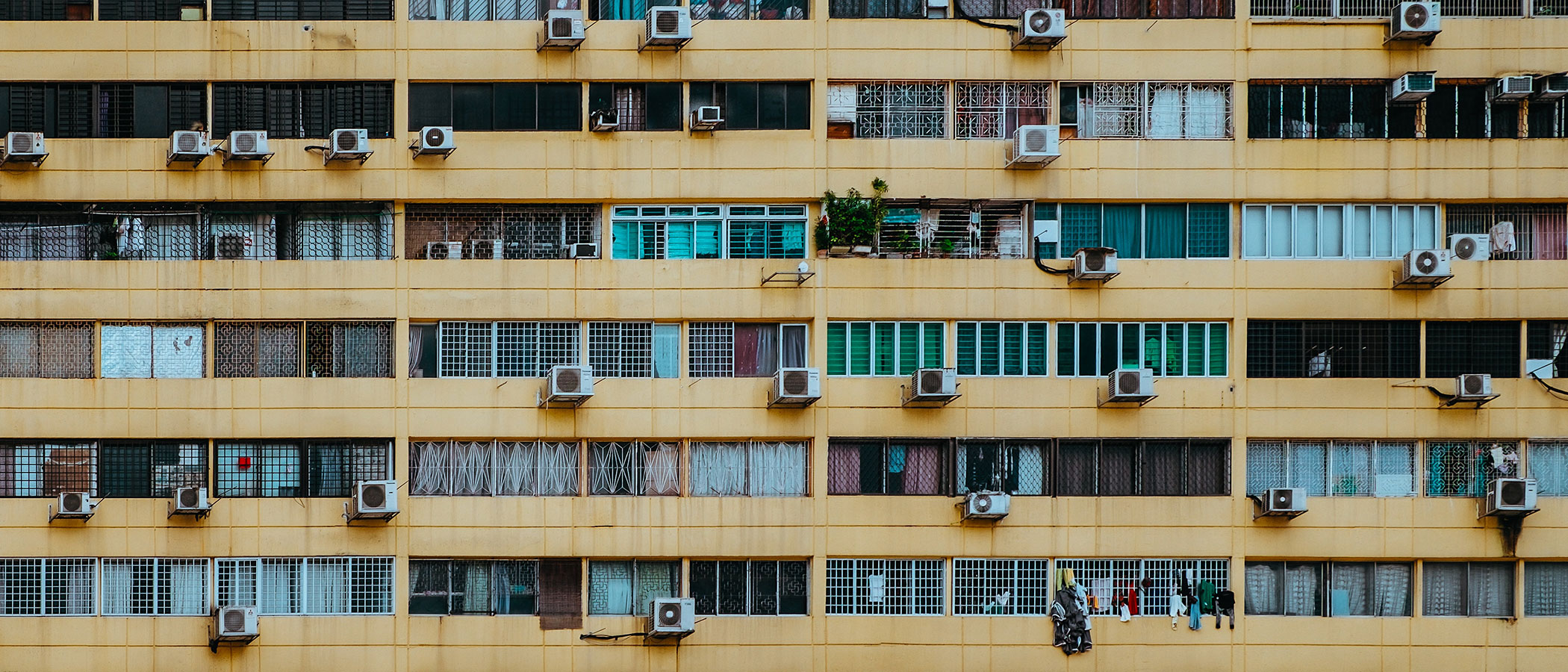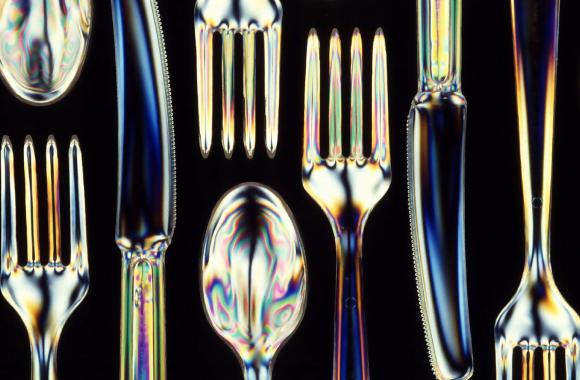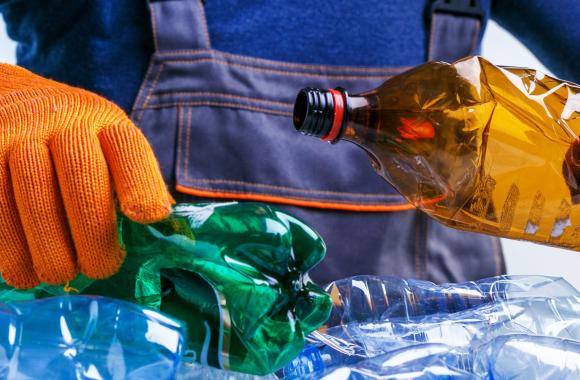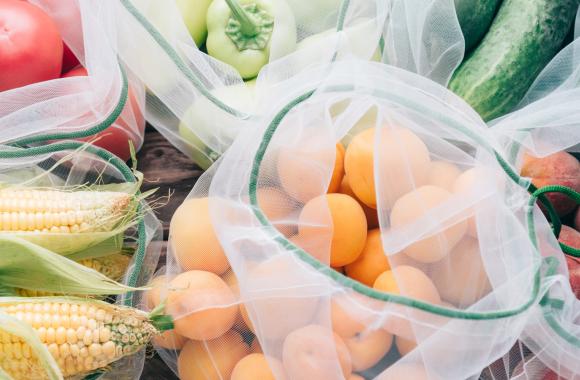Alternative Refrigerants
Fluorinated gas refrigerants are powerful greenhouse gases. Alternatives, such as ammonia or captured carbon dioxide, can replace them over time.
Reduced/Sequestered
2020–2050
Impact
The replacement of hydrofluorocarbon (HFC) refrigerants with a mix of alternatives can reduce emissions by 42.73–48.75 gigatons of carbon dioxide equivalent from 2020 to 2050. Current and emerging refrigerants and appliances (including ammonia, carbon dioxide, and propane) can replace between 67 and 82 percent of HFC refrigerants by 2050.
Introduction
Project Drawdown’s Alternative Refrigerants solution consists of the gradual replacement of hydrofluorocarbons (HFCs), which are highly potent greenhouse gases, by alternative refrigerants, including ammonia, carbon dioxide, propane, and isobutane.
Refrigerants are used in commercial refrigeration systems; in household appliances such as air conditioners and refrigerators; in refrigerated containers used for carrying perishable goods; as air conditioning systems on board cars, trains, aircrafts, and ships; in industrial cooling systems; and more. They include chlorofluorocarbons (CFCs), hydrochlorofluorocarbons (HCFCs), hydrofluorocarbons (HFCs), and natural refrigerants, such as carbon dioxide and ammonia.
CFCs have been phased out under the Montreal Protocol; HCFCs are also being phased out. Refrigerants are emitted into the environment during the production process, from refrigerant banks (existing equipment) due to leakages, and during end-of-life disposal of appliances. Because the release of refrigerants has a large impact on global warming, world leaders agreed in 2016 to phase out HFCs and replace them with natural refrigerants with much less warming potential under the Kigali Accord of October 2016.
Methodology
Emissions from refrigerants can be reduced in five main ways:
- lower the demand for appliances
- replace refrigerants with substances with lower global warming impact
- increase the refrigeration efficiency of appliances to control leakage of refrigerants from appliances
- recover, reclaim, recycle, and destroy refrigerants at the end of their useful life.
This solution models the second option.
Total Addressable Market
To quantify the impact of the Alternative Refrigerants solution, we generated a total addressable market forecast of HFC refrigerant gas emissions for 2020–2050, forecasted adoption of replacement refrigerants and the resulting decreased emissions, and compared the emissions from the total market and the adoption scenarios to arrive at the results.
The model used available projections for global HFC emissions across various subsectors, such as commercial, industrial, domestic, and stationary air conditioning systems. Velders (2015) provides upper and lower refrigerant emission scenarios. We also calculated a mean scenario. These forecasts show steadily increasing HFC emissions through 2050. They establish the total addressable market for the Alternative Refrigerants solution.
Adoption Scenarios
We used forecasts from the literature to model adoption of the Alternative Refrigerants solution. Velders et al. (2015) estimated the adoption of alternative refrigerants correlated with two shared socioeconomic pathways developed by the International Institute for Applied Systems Analysis (IIASA). The literature presents a low scenario and a high scenario. A mean scenario is also calculated. We used these three scenarios to establish our adoption scenarios. We then compared these scenarios with a reference scenario in which the solution’s market share was fixed at current levels.
- Scenario 1: 1,402.35 kilotonnes of refrigerant are replaced (66 percent of the total addressable market).
- Scenario 2: 1,667.60 kilotonnes of refrigerant are replaced (79 percent of the total addressable market).
Emissions Model
We used yearly data from the literature to predict HFC emissions for the reference scenario. When the literature didn’t specify the exact mix of alternative refrigerants, we used a global warming potential (GWP) of 10. This is much lower than the GWP of any of the nearly 2,000 HFCs in use today.
Indirect emissions from powering refrigeration appliances is a significant component of grid emissions and is expected to increase in a warming world. Adoption of HFC replacements brings the potential for increased energy efficiency. Some have estimated that this potential may be half as much or as great as direct emissions reduction from CFC replacement. This model does not include these indirect emissions reductions.
Results
Under Scenario 1, carbon dioxide equivalent emissions are reduced by 42.73 gigatons from 2020 to 2050. Scenario 2 showed a larger reduction of 48.75 gigatons from 2020 to 2050. Financials are not modeled due to insufficient data.
Discussion
To phase down HFCs, we need to identify and transition to replacement fluids. Currently, all replacements include trade-offs. Climate-friendly alternatives to HFCs fall into two basic categories: “natural” or non-fluorinated substances with low GWPs, and fluorinated substances with low to mid-range GWPs (Borgford-Parnell et al., 2018). Currently there is an emphasis on “natural refrigerants” as replacements (Zanchi, Boban, and Soldo 2019). Commercially available natural refrigerants include ammonia, with a GWP of near zero; hydrocarbons (e.g., propane and isobutene), with GWPs of less than 4; and carbon dioxide, with a GWP of 1.
Commercially available fluorinated substances include oxygen and low-GWP HFCs, known as hydrofluoro-olefins, some with GWPs of less than 1, according to the Intergovernmental Panel on Climate Change (IPCC). Other alternatives include HFC-32, with a GWP of 677, and HFC-152a, with a GWP of 138, according to the IPCC. Other alternatives, such as district cooling, do not involve refrigerants.
References
Borgford-Parnell, N., Beaugrand, M., Andersen, S. O., Zaelke, D. (2018). Phasing Down the Use of Hydrofluorocarbons (HFCs). The Global Commission on the Economy and Climate: IGSD. Accessed November, 2021 at https://newclimateeconomy.report/workingpapers/wp-content/uploads/sites/5/2016/04/Phasing-down-HFCs_final_web.pdf
Velders, G. J. M., Fahey, D. W., Daniel, J. S., Anderson, S. O., McFarland, M. (2015). Future atmospheric abundances and climate forcings from scenarios of global and regional hydrofluorocarbon (HFC) emissions. Atmospheric Environment, 123, pp. 200-209. DOI: 10.1016/j.atmosenv.2015.10.071
Zanchi, V., Luka B., Soldo, V. (2019). Refrigerant Options in the Near Future. Journal of Sustainable Development of Energy, Water and Environment Systems 7, (2) pp. 293-304. DOI: https://doi.org/10.13044/j.sdewes.d6.0250
What You Can Do
If your company or parts of its supply chain use conventional refrigerants, encourage them to consider climate-friendly alternatives.
Avoid unnecessarily replacing appliances that use refrigerants. Recycle them properly when you do replace them.
- Expand your knowledge by exploring another Drawdown solution.










